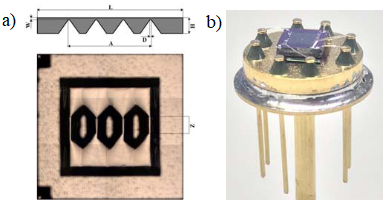Azalia Mirhoseini, Anna Goldie, Mustafa Yazgan, Joe Jiang, Ebrahim Songhori, Shen Wang, Young-Joon Lee, Eric Johnson, Omkar Pathak, Sungmin Bae Azade, Nazi Jiwoo, Pak Andy, Tong Kavya Srinivasa, William Hang, Emre Tuncer, Anand Babu Quoc, Le James Laudon, Richard Ho, Roger Carpenter, Jeff Dean
Chip placement with deep reinforcement learning
arXiv preprint:2004.10746 (2020)
Abstract: In this work, we present a learning-based approach to chip placement, one of the most complex and time-consuming stages of the chip design process. Unlike prior methods, our approach has the ability to learn from past experience and improve over time. In particular, as we train over a greater number of chip blocks, our method becomes better at rapidly generating optimized placements for previously unseen chip blocks. To achieve these results, we pose placement as a Reinforcement Learning (RL) problem and train an agent to place the nodes of a chip netlist onto a chip canvas. To enable our RL policy to generalize to unseen blocks, we ground representation learning in the supervised task of predicting placement quality. By designing a neural architecture that can accurately predict reward across a wide variety of netlists and their placements, we are able to generate rich feature embeddings of the input netlists. We then use this architecture as the encoder of our policy and value networks to enable transfer learning. Our objective is to minimize PPA (power, performance, and area), and we show that, in under 6 hours, our method can generate placements that are superhuman or comparable on modern accelerator netlists, whereas existing baselines require human experts in the loop and take several weeks.

Fig: Visualization of placements. On the left, zero-shot placements from the pre-trained policy and on the right, placements from the finetuned policy are shown. The zero-shot policy placements are generated at inference time on a previously unseen chip. The pre-trained policy network (with no fine-tuning) places the standard cells in the center of the canvas surrounded by macros, which is already quite close to the optimal arrangement and in line with the intuitions of physical design experts.
Acknowledgments: This project was a collaboration between Google Research and the Google Chip Implementation and Infrastructure (CI2) Team. We would like to thank Cliff Young, Ed Chi, Chip Stratakos, Sudip Roy, Amir Yazdanbakhsh, Nathan Myung-Chul Kim, Sachin Agarwal, Bin Li, Martin Abadi, Amir Salek, Samy Bengio, and David Patterson for their help and support.







